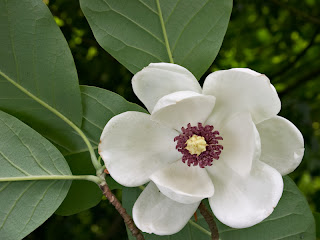 A member of Magnolia family this large and varied genus consists of around 100 species of deciduous and evergreen trees as well as countless cultivars, and occurs naturally throughout Asia and North America. the Leaves are usually large, oval and smooth edged. The handsome flowers are generally large, fragrant and solitary ad vary in shape from almost flat and saucer-like to a narrow goblet shape. They occur in shade of white, pink, yellow or purple. The fruits that follow are often pink or red, cone-like, showy clusters, with colorful seeds. Magnolia takes its name from the French botanist Pierre Magnol (1683-1715).
A member of Magnolia family this large and varied genus consists of around 100 species of deciduous and evergreen trees as well as countless cultivars, and occurs naturally throughout Asia and North America. the Leaves are usually large, oval and smooth edged. The handsome flowers are generally large, fragrant and solitary ad vary in shape from almost flat and saucer-like to a narrow goblet shape. They occur in shade of white, pink, yellow or purple. The fruits that follow are often pink or red, cone-like, showy clusters, with colorful seeds. Magnolia takes its name from the French botanist Pierre Magnol (1683-1715).CULTIVATION
Generally fast growing, magnolias prefer light shade and sheltered spots in the garden away from the wind and late frosts. Although some species are lime tolerant, most prefer well drained acid soils that are rich in humus. propagate from cutting summer by sowing seed in autumn or by grafting in winter.





